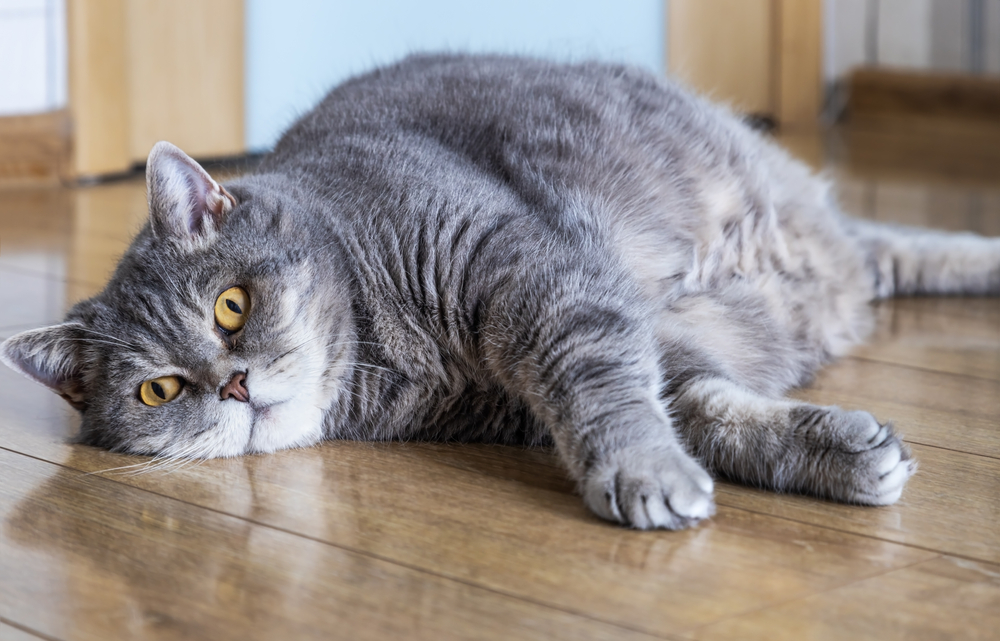You may feel uncomfortable talking about your weight and that discomfort likely extends to discussing your pet’s weight. Awkward or not, a pet’s weight matters, and obesity is a serious and increasingly common condition that puts pets’ health at risk, even decreasing their life span compared with their leaner counterparts. However, determining if your pet is overweight requires more than reading the scale’s number. Our Bayview Animal Hospital team explains how to evaluate your pet’s body condition score (BCS) and manage your pet’s weight.
Why your pet’s weight matters
A pet’s obesity is not an aesthetic concern. Afterall, a pudgy pup’s rolls are undeniably cute. However, excess weight is a serious health issue that has been on the rise for more than a decade. According to the Association for Pet Obesity Prevention (APOP), more than 50% of U.S. dogs and cats are overweight or obese. Such startling statistics underscore this issue’s urgency. Like people, overweight and obese pets have an increased health condition risk, including:
- Arthritis — Extra weight puts additional stress on your pet’s joints, which can lead to painful cartilage deterioration over time.
- Heart disease — Overweight pets are prone to high blood pressure, which can cause retinal detachment or kidney failure.
- Diabetes — Overweight and obese pets have a high risk for developing type 2 diabetes, which can occur when the body can’t use glucose normally. A diabetic pet requires frequent veterinary visits, a specific diet, and daily insulin injections.
- Respiratory difficulties — When excess fat lines an overweight pet’s chest cavity, the substance inhibits their breathing and increases their risk for developing laryngeal paralysis and tracheal collapse.
- Cancer — Fat cells cause chronic inflammation, increasing an overweight pet’s cancer risk.
- Skin infections — Excess fat deposits commonly increase a pet’s skinfolds (i.e., those adorable rolls) that create the perfect environment for bacteria and yeast to multiply and cause infections.
How to determine if your pet is overweight
A pet is considered overweight if they are at least 10% to 20% heavier than their ideal weight, but the scale’s number doesn’t provide the whole picture, making the use of a BCS chart vital to evaluating your pet’s body condition. A BCS assigns a number assigned to your pet’s weight based on a visual fat evaluation at a few key body locations, including their ribs, waist, and hips. To determine whether your pet is at a healthy weight, consider the following BCS ranges:
- A score in the 1-to-3 range = underweight — Your pet may be underweight if you can easily see their ribs, spine, and hip bones, with little fat, and an extremely obvious waistline.
- A score in the 4-to-5 range = ideal weight — When your pet is at their ideal weight, you cannot see their ribs, spine, and hip bones, but you can easily feel them. Your pet is well proportioned, with a visible waistline.
- A score in the 6-to-9 range = overweight to obese — Your pet may be overweight if you cannot see or feel their ribs, spine, hip bones, or their waistline, and they have excess body fat deposits.
Tips to help your pet shed extra pounds

If your pet’s BCS is higher than their ideal range, they are overweight or obese. To help them trim down and maintain a healthy weight, follow these tips:
- Schedule a veterinary visit — Before making significant changes to your pet’s diet or exercise routine, have our Bayview Animal Hospital team examine your furry pal to rule out an underlying health condition. Hypothyroidism or Cushing’s disease can slow your pet’s metabolism, and arthritis pain and joint or soft tissue damage can reduce your furry pal’s mobility. To preserve or restore your pet’s pain-free mobility, our team can provide you with information and resources so you learn how to feed your pet for optimum health and weight loss, and we will recommend safe exercises based on your furry pal’s health status.
- Feed your pet the appropriate amount — Often, the recommended feeding amount listed on a pet food package is too high. Rather than following those guidelines, calculate your pet’s daily caloric needs. Then, determine the number of calories that are in a serving of your pet’s food. Finally, calculate the amount your pet should eat at each meal based on their daily calorie allotment.
- Cut back on treats — Help your pet lose weight by minimizing the treats they receive daily. Treats should make up no more than 10% of your pet’s total diet and should be included in their daily caloric intake. Rather than feeding your furry pal high-calorie treats that provide little nutritional value, feed your pet steamed or raw vegetables such as celery, carrots, green beans, and broccoli.
- Increase your pet’s daily exercise — Most pets receive less than the daily heart-pumping aerobic exercise necessary for their bodies to burn an adequate calorie amount and stay fit. Regular exercise is essential for any weight-loss plan. Ensure your pet gets enough daily physical activity for their breed, age, and size.
By managing your furry pal’s weight, you help them live a long, happy, and healthy life. If you have questions about your pet’s weight or diet, schedule an appointment with our Bayview Animal Hospital team.







Leave A Comment